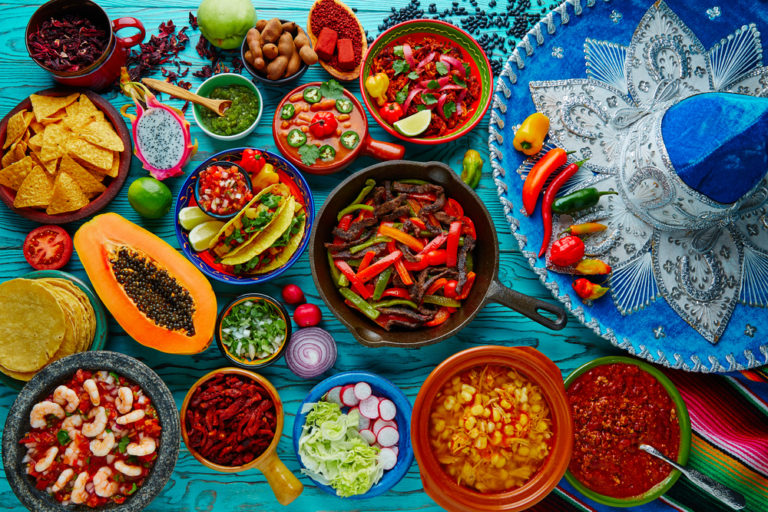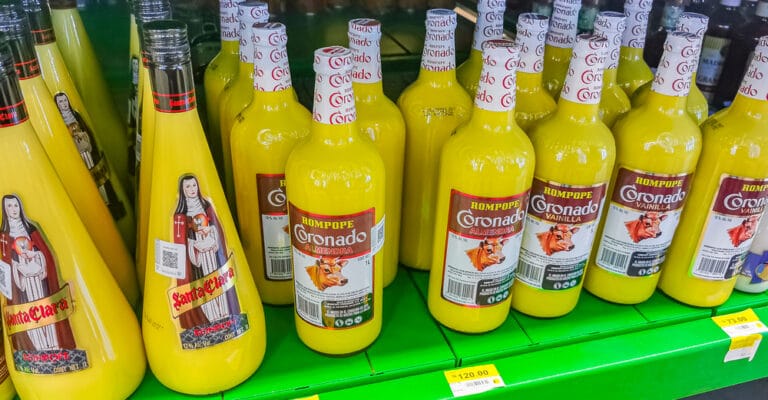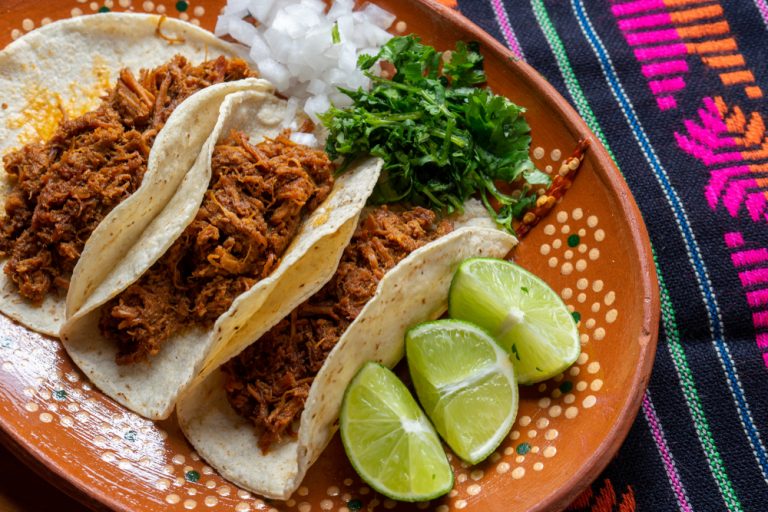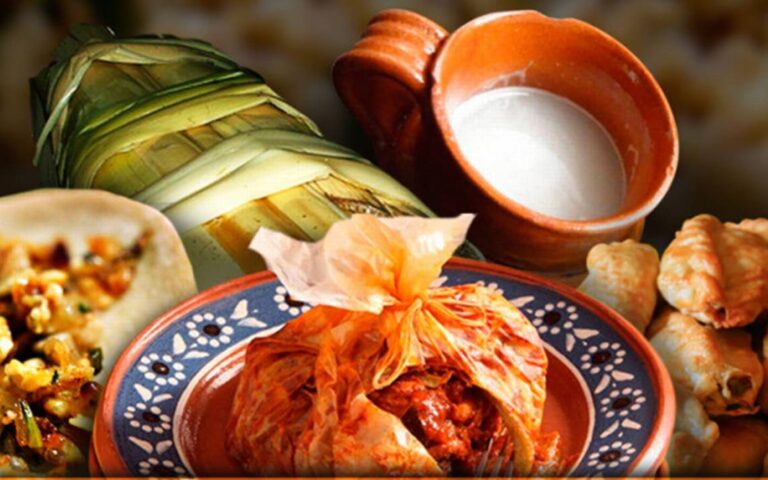Mexican Drinks: 10 of Mexico’s Top Signature Beverages

Mexican Drinks: 10 of Mexico’s Top Signature Beverages
Embarking on a journey through the vibrant tapestry of Mexico’s culinary landscape is an adventure that tantalizes the taste buds and transports the senses to a realm of rich traditions and spirited celebrations.
At the heart of this gastronomic odyssey lies a treasure trove of beverages, each embodying the essence of Mexican culture and history.
From iconic classics to hidden gems, this list showcases 10 of Mexico’s most traditional drinks that have become synonymous with fiestas, family gatherings, and the unmistakable zest for life that defines this captivating nation.
So, tighten your sombrero, dust off your maracas, and get ready to embark on a flavorful journey that reveals the soul of Mexico through its most beloved liquid companions. Salud!
10 Most Traditional Mexican Drinks
Making this list was super difficult given the endless beverages that exist in our country.
Nevertheless, I consider these 10 drinks the most representative of Mexico because you can find them mostly all over the country. Let’s begin.
1. Tequila
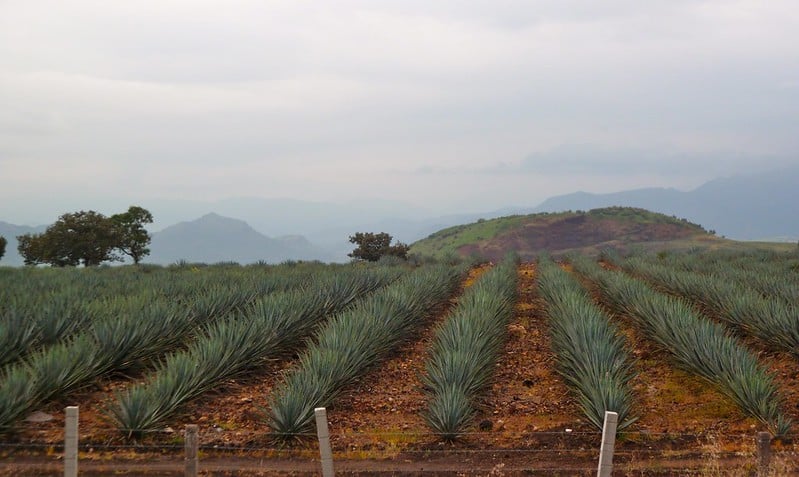

Originally from the blue agave fields of the magical town of Tequila Jalisco, Tequila has brought worldwide fame to our country and has become one of the great ambassadors of Mexican culture.
Considered by many as one of the best manufactured alcoholic beverages in the world, tequila has an elaboration process -with strict quality standards- almost as interesting as its flavor.
Tequila is obtained from the fermentation with yeast and distillation of the blue agave juices, from the cooking of the agave heads.
These “heads” have between six and ten years of maturation. Subsequently, they are placed in wooden barrels.
Tequila began to be produced in the middle of the 17th century in a hacienda called Cuisillo, and today there are around 160 brands and 12 haciendas that produce it, giving life to one of the most demanded Mexican products abroad, which has the prestigious label of denomination of origin.
You may want to read: A Sip of Mexico: Mezcal, Tequila, and the Agave Spirit Saga
Again, this acclaimed spirit is produced in the town that bears its name, a charming place that, among agave landscapes, mariachi, and provincial airs, keeps legends and the secret of this mystical beverage.
Visiting its quiet corners you will find the National Tequila Museum, the Templo de la Purísima, the Quinta Sauza, and the extinguished Tequila Volcano.
2. Mezcal
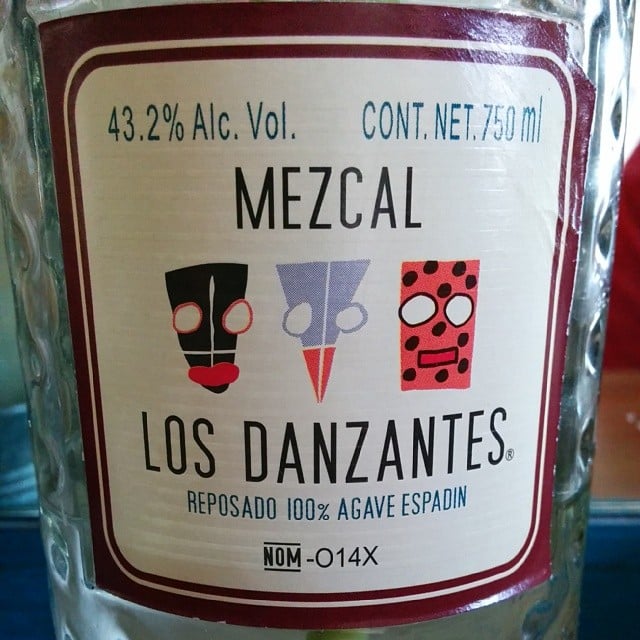
Legend has it that a thunderbolt struck an agave plant, opening and cooking its center.
From afar, the natives perceived the penetrating aroma of the nectar that emanated and drank the liquid with fear, a gift from their deities.
Thus, according to the myth, Mezcal was born.
It was not until the 16th century (when the Spaniards introduced the distillation process, a legacy from the Arabs), that distilled spirits began to be produced in Mexico.
Among them, tequila, aguardiente, and mezcal stand out.
Mezcal is the most produced in the country because any place where agaves are grown is ideal for its production.
You may want to read: Mezcal Mastery 101: A Pro’s Guide to Impeccable Tasting
Thanks to this, different types of mezcal are produced depending on the maguey, the climate, the distillation techniques, and the container used for fermentation.
The best known is the one from Oaxaca, where the mezcal tradition is said to have originated.
Here it is served in its original presentation: a black clay container supported by a basket.
Although this drink also emerged as a traditional medicine, throughout history, it has been endowed with a religious and ritual character.
It is also an essential delicacy in the festivities of many of the country’s indigenous peoples.
In these communities, it is served in hierarchical order and cannot be refused. Undoubtedly, it is a liquid tradition that no Mexican -or foreigner- can fail to try.
3. Pulque
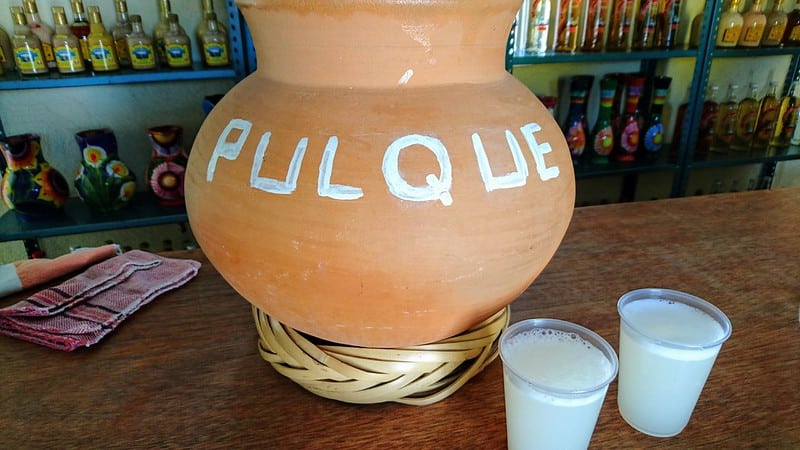
The tradition and mystique surrounding pulque or octli comes from the mythology of pre-Hispanic times.
This white-colored liquid with a rough taste was considered a religious delicacy. However, it could only be consumed by people over 52 and on special occasions.
The myth describes that the tlacuache (Opossum) was also the one who gave men the secret of making pulque.
Known as the first drunkard, the tlacuache discovered the effects of fermented mead and taught mankind how to prepare it.
In Aztec cosmogony, Tezcatzoncatl was the god of wine (or pulque), who had 400 priests consecrated to him.
Pulque is made from the fermentation of the aguamiel (mead) through a process known as “raspado.”
When the maguey reaches a certain age, the core is removed. Only a hollow is left that will be scraped with an acocote -a kind of spoon-. In this way, it will release the juice.
The juice concentrates in the hollow and is absorbed. Little by little the juice is deposited in a vessel called “odre” until it ferments, usually in less than 24 hours.
Pulque was so important during the Conquest that the taxes collected from its sale and production were one of the pillars of the colonial economy.
Today, this beverage is still produced, mainly in the state of Hidalgo. Here, the rites and ceremonies of the ancient settlers are still performed when a plant produces mead for the first time.
4. Aguas Frescas: The Most popular non-alcoholic Mexican drinks

In some hot places (or during the summer), aguas frescas have become the most popular non-alcoholic Mexican drinks consumed by their inhabitants.
Aguas frescas are usually made from the seeds and/or pulp of different fruits and sometimes sweetened with sugar.
The most popular aguas frescas are lime with chia, hibiscus (jamaica), horchata, and tamarind.
However, most of the ingredients are not native to Mexico. For example, the tamarind is native to India, while the leaves of the hibiscus flower come from tropical Africa.
Horchata, which in Mexico is prepared with rice, vanilla, and cinnamon, was first used in Valencia, Spain.
But what makes aguas frescas so special in our country is how they are prepared and served.
5. Tepache
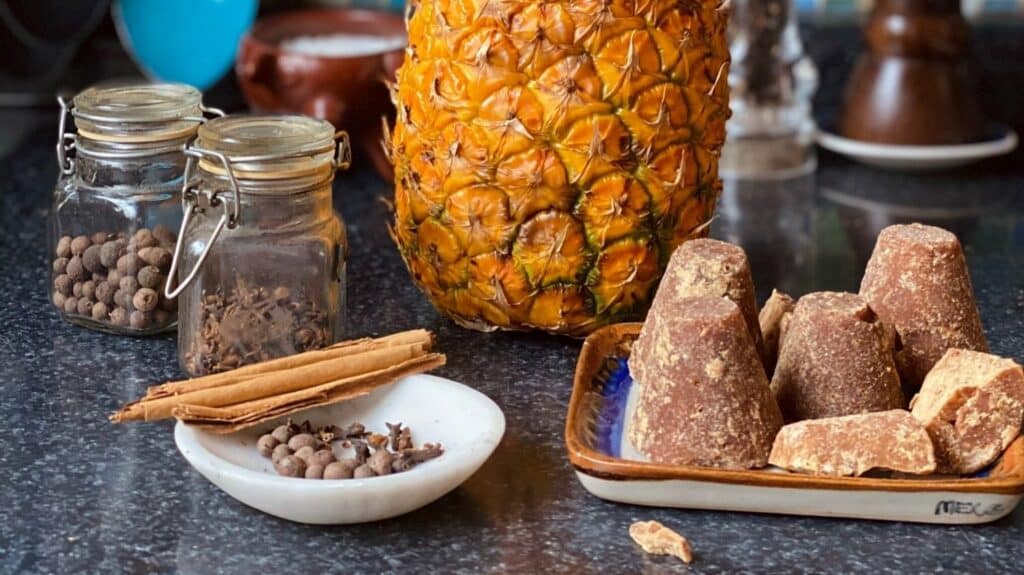
This strong-flavored beverage is produced from fresh pineapple rind and peel fermentation.
The word tepache comes from the Nahuatl “tepiatl,” which means corn drink because, previously -and currently in some indigenous communities-, it was made from corn fermentation in water and was even used for some Mayan cults.
The elaboration of tepache requires four days: in the first two, pieces of pulp and pineapple peel are left to rest in a clay pot with cloves and cinnamon, then a mixture of barley and piloncillo is added, previously boiled, which are left to ferment for another two days.
Although this is a very common drink in Mexico City, it is also widely consumed, although with some variations, in Jalisco, Nayarit, San Luis Potosí, Puebla, Morelos, Oaxaca, and Veracruz.
The refreshing taste of tepache has become a basic ingredient in the festivals and regional fairs of many states, mainly in central and southern Mexico, as it generally has a low alcoholic level and a unique flavor that you can’t miss!
6. Tejuino
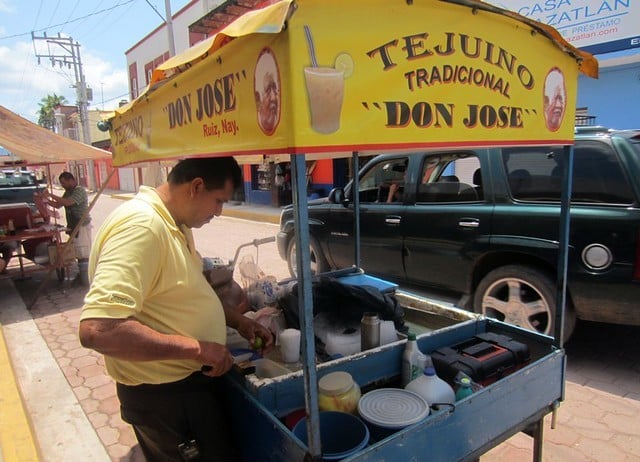
Another popular fermented Mexican drink, but this one made from corn, tejuino.
It is widely consumed in several states such as Nayarit, Veracruz, Colima, and Jalisco, but mainly in the west of the country.
It can be found in street stalls, either neat or prepared with lime sorbet; then it’s sweetened with piloncillo and served cold with salt, lime, and chili.
The best way to make tejuino is to grind the corn kernels, which are then boiled, and once cold, it is strained, enriched, and fermented in special pots.
7. Michelada

Although tequila is what most countries associate Mexico with, beer is perhaps the most consumed by Mexicans.
Whether dark or light, commercial or artisanal, this alcoholic beverage is what many prefer in their glass.
But the favorite way to enjoy beer is in Michelada, a mixture of lime juice, salt, Worcestershire sauce, Maggi seasoning, and chili.
Currently, there are many versions of micheladas, in addition to the classic ingredients, with fruit pulp, such as tamarind michelada or mango michelada, etc.
My favorite though, is with Clamato!
8. Atole
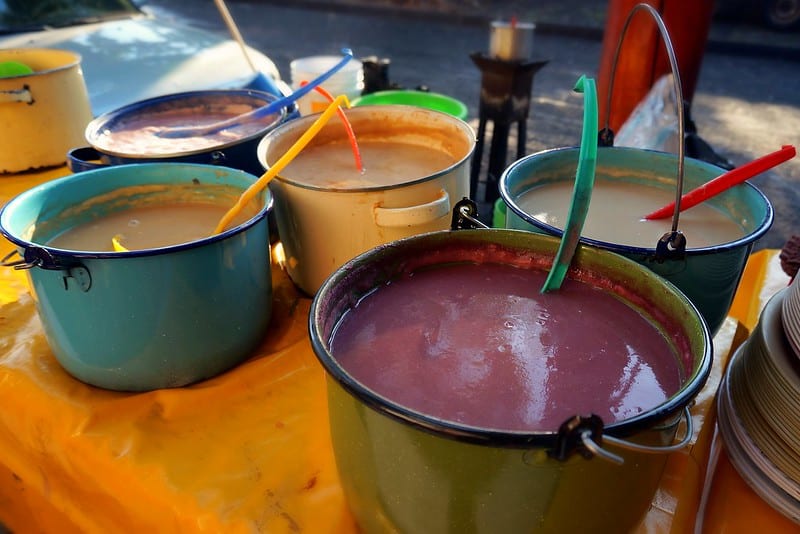
This pre-Hispanic concoction was prepared only with nixtamalized corn and water, but after the arrival of the Spaniards, it underwent modifications in its preparation, as they started mixing it with milk and other ingredients.
Atole can be found with different flavorings or spices, such as vanilla, cinnamon, chocolate, strawberry, orange, coffee, or others.
One way to prepare Atole is by boiling milk with some cornstarch, water, vanilla extract, sea salt, and sugar.
But you can also find powdered atole presentations that only need water or milk and are ready to drink.
9. Cafe de Olla
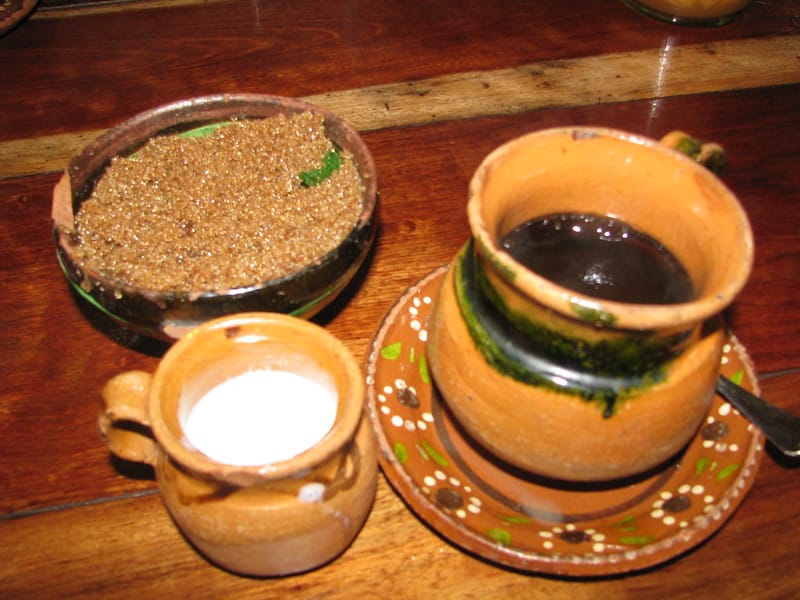
Café de olla is a historic Mexican coffee-based beverage.
It is prepared by mixing spices (cinnamon, cloves, aniseed, piloncillo, and orange peels) and coffee in a clay pot.
However, while many enjoy it for its unique blend of flavors, it was invented decades ago out of necessity.
Supposedly, the drink was created during the Mexican Revolution in the early 20th century for the country’s soldiers.
By mixing spices and coffee in a clay pot, they could prepare and enjoy a hot drink during the long, cold nights in the war camps.
Whether it was invented during the Mexican Revolution or not, café de olla is now recognized as a traditional Mexican beverage and a historic part of the country’s coffee culture.
10. Margarita cocktail
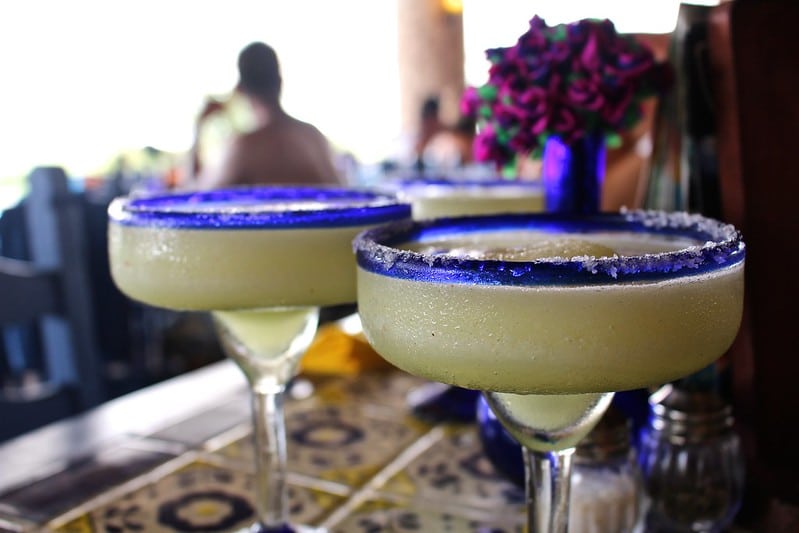
Yes! The Margarita, Mexico’s National cocktail. How could I forget?
Although there are several versions of the origin of the Margarita cocktail, the official story dates back to the city of Ensenada, Baja California, in a small bar called Andaluz.
The story goes that the drink was made for the owner of the hotel where the bar was located. The name of the drink honors the owner, Marjorie King Plant.
What is it that makes this drink so famous and special that despite the years it never goes out of fashion?
The simplicity of its ingredients, but when you mix them you get an exquisite and refreshing drink.
The original Margarita cocktail is made with tequila, triple sec, lime, and salt, however, there have been different variations over the years to experiment with new flavors.
Now you can find margaritas of different textures, either on the rocks or with crushed ice, and mainly fruity flavors such as strawberry margarita, mango, tamarind, etc.
But, undoubtedly, for many, the traditional one will always be the best.
Top 10 Mexican Drinks: Conclusion
In conclusion, exploring the vibrant world of Mexican drinks unveils a rich tapestry of flavors and cultural significance.
From the spirited kick of a classic Margarita to the comforting warmth of Atole, Mexico’s top signature beverages are a testament to the country’s diverse culinary heritage.
Whether you find yourself sipping on a refreshing Horchata under the warm sun or savoring the complexity of a Mezcal cocktail by moonlight, each drink tells a story of tradition, craftsmanship, and the joy of shared moments.
As you embark on your own journey through Mexico’s beverage landscape, remember that each sip is an invitation to connect with the country’s history, people, and the artistry that goes into crafting these iconic libations.
Salud to Mexican drinks, a celebration in every glass!

